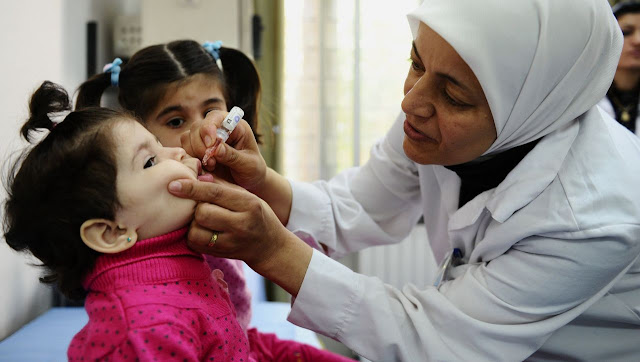Polio vaccines are vaccines used to prevent poliomyelitis
Human enteroviruses of the Picornaviridae family are thought
to be the primary cause of the acutely contagious disease known as
poliomyelitis. Due to poor sanitation and personal hygiene, polioviruses may
spread by faecal to oral or oral to oral transmission routes. Children can be
immunised against polio with vaccinations such as the oral polio vaccine (OPV)
and the inactivated poliomyelitis vaccine (IPV). The IPV contains three
poliovirus strains, Mahoney type 1, MEF-1 (Middle East Forces) type 2, and
Saukett type 3, while the OPV contains live attenuated versions of similar
viruses. Oral administration is used for OPV whereas injectable administration
is used for IPV.
Poliomyelitis is a highly contagious illness brought on by
the poliovirus. Infantile paralysis and polio are other names for it. The virus
is a single-stranded RNA virus that belongs to the genus Enterovirus. The
poliovirus has three serotypes: P1, P2, and P3. Developing antibody to one
serotype does not result in a significant amount of immunity to the other serotypes.
The virus is mainly spread through the fecal-oral channel, through drinking
contaminated water or food, and less frequently through the oral-oral route.
Even in the absence of symptoms, those who are sick can spread the illness for
up to 6 weeks. After roughly a week, the poliovirus invades local lymphoid
tissue, enters the circulation, and may then infect cells in the central
nervous system. The poliovirus initially colonises the gastrointestinal tract,
more especially the intestine and oropharynx. The usual poliomyelitis symptoms
are caused by the poliovirus replicating in motor neurons of the anterior horn
and brain stem, which leads to cell death. Over the course of the projection
period, this is expected to encourage a large increase in the polio
vaccines.




Comments
Post a Comment